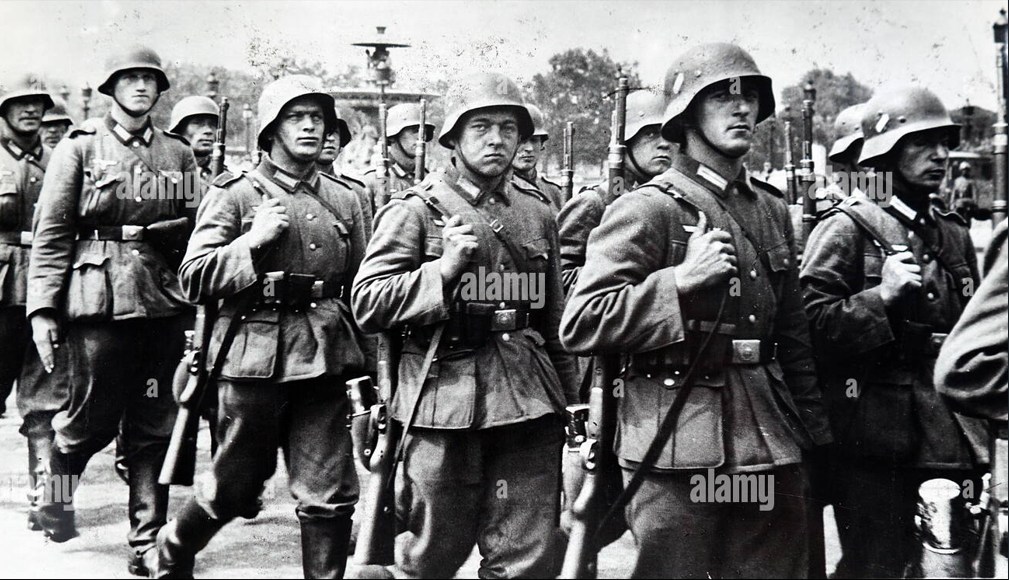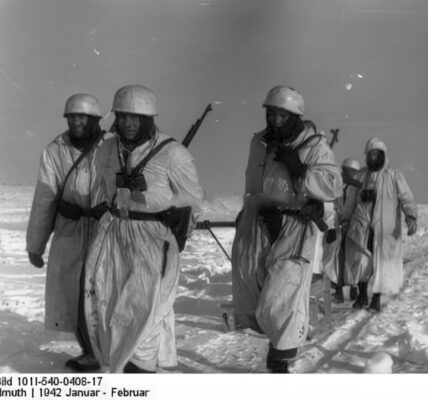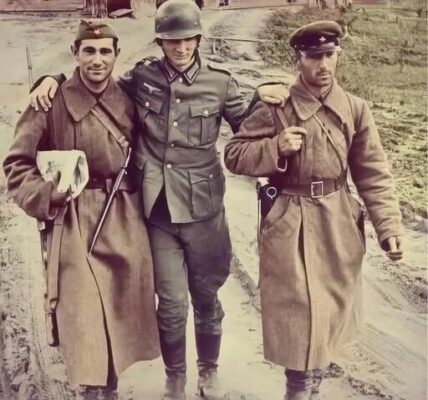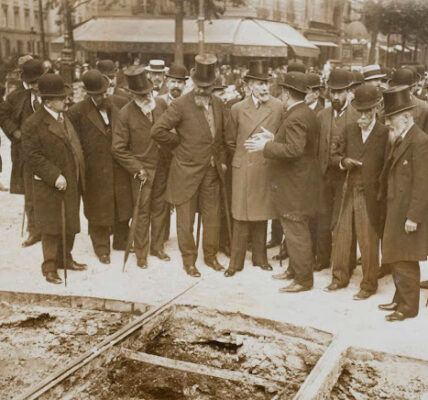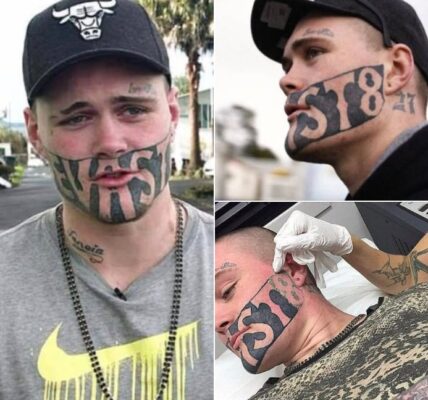
An Auxiliary Territorial Service (ATS) scout manning a 3.7-inch anti-aircraft gun. 1942.
These are rare color images from the Second World War, featured in the Imperial War Museum’s book “The Second World War in Color.” Many of them are published for the first time and shed light on the background of the conflict.
Color film was quite rare during World War II. Most photographs taken during the war were black and white, and color photography was still a relatively new technology. This fact makes these photos so fascinating and astonishing.
All images are in their original condition, not colorized or edited. Colorized photos or film footage from World War II have been around for some time, but these images truly depict the world as people saw it back then.
The images were commissioned by the British Ministry of Information, which obtained a very small amount of Kodachrome film. They then decided to use it experimentally, giving it to some of their official photographers, who took it to various locations and used it very sparingly. In addition, some of the images ended up in the collections of the Library of Congress.
World War II was the deadliest military conflict in history. An estimated 70–85 million people lost their lives, equivalent to about 3% of the world’s 1940 population (estimated at 2.3 billion).

A crew of the 16th/5th Lancers, 6th Armoured Division, cleans the muzzle of their Crusader tank at El Aroussa, Tunisia. 1943.
The Soviet Union lost approximately 27 million people during the war, including 8.7 million military personnel and 19 million civilians. The largest number of military deaths were 5.7 million Russians, followed by 1.3 million Ukrainians.
A quarter of the Soviet Union’s population was wounded or killed. Germany suffered 5.3 million casualties, primarily on the Eastern Front and during the final fighting in Germany.
Of the total number of soldiers killed in World War II, approximately 85 percent—mainly Soviet and Chinese—were on the Allied side and 15 percent on the Axis side. Many of the deaths were attributed to war crimes committed by German and Japanese troops in occupied territories.
An estimated 11 to 17 million civilians died either as a direct or indirect result of Nazi ideological policies, including the systematic genocide of some six million Jews during the Holocaust and a further five to six million ethnic Poles and other Slavs (including Ukrainians and Belarusians), Roma, homosexuals, and other ethnic groups and minorities.
The mass bombings of civilian areas, particularly the cities of Warsaw, Rotterdam, and London, also included attacks by the German Air Force on hospitals and fleeing refugees, as well as the bombings of Tokyo and the German cities of Dresden, Hamburg, and Cologne by the Western Allies. These bombings can be considered war crimes. They led to the destruction of over 160 cities and the deaths of over 600,000 German civilians.
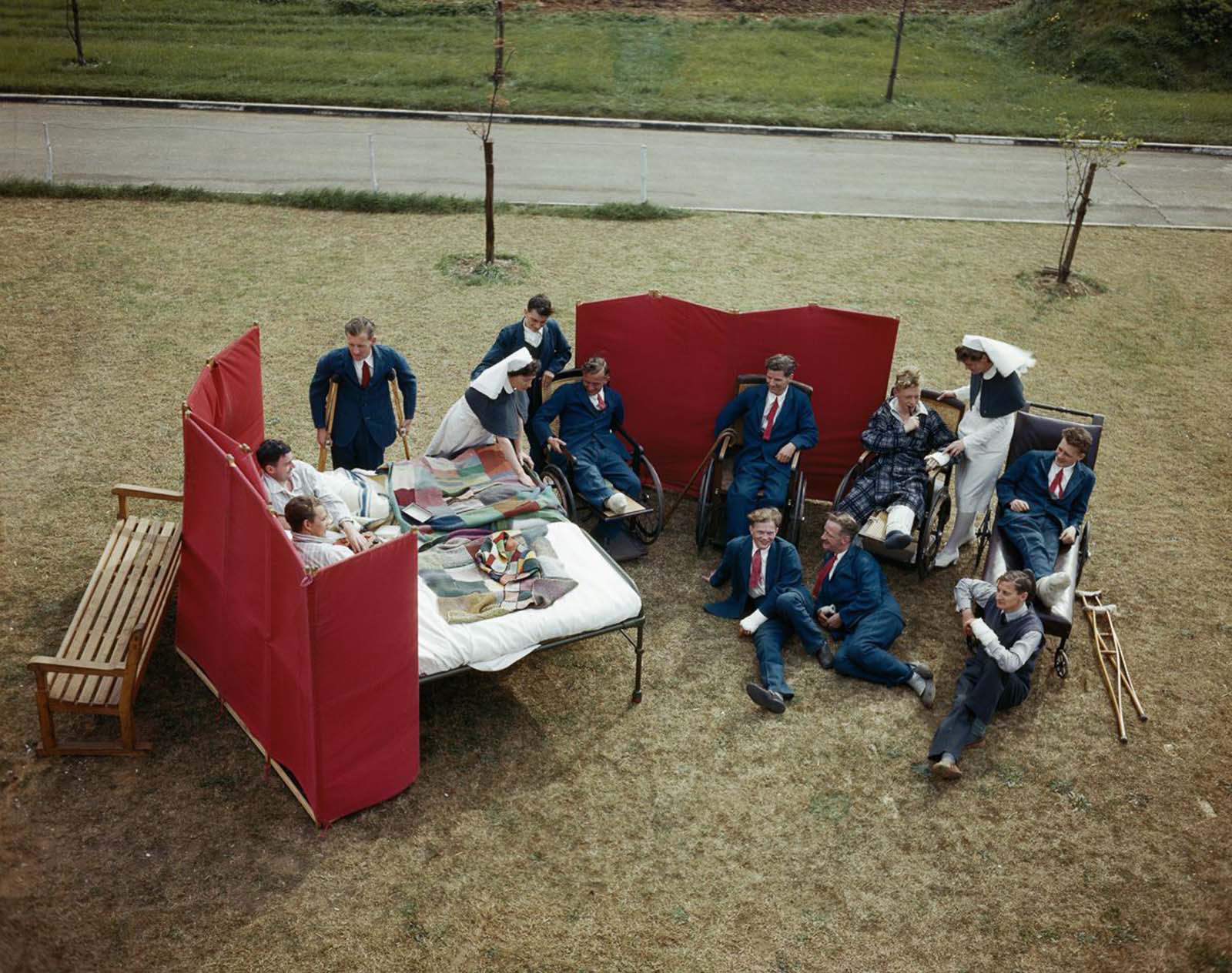
Nurses and convalescents at Princess Mary’s Royal Air Force Hospital in Halton, Buckinghamshire. 1943.

Private Alfred Campin of the 6th Battalion, Durham Light Infantry, during combat training in Great Britain, 1944.

An air raid warden inspects damaged buildings in Holborn, London. 1941.

British paratroopers prepare for a practice jump from an RAF Dakota based at Down Ampney in Wiltshire, 1944.

Field Marshal Sir Bernard Montgomery explains the Allied strategy to King George VI during his command caravan in Holland. 1944.

General Dwight D. Eisenhower and his senior commanders at Supreme Allied Headquarters in London. 1944.

Lancaster bombers near completion at the Avro assembly plant in Woodford, near Manchester, 1943.

Lieutenant Vernon R. Richards of the 361st Fighter Group flies his P-51D Mustang, nicknamed “Tika IV,” during a bomber escort mission. 1944.

A 5.5-inch gun crew of the 75th (Shropshire Yeomanry) Medium Regiment, Royal Artillery, in action in Italy. 1943.

British soldiers admire the Caryatids on the Acropolis during a sightseeing tour of Athens, 1944.

The RAF’s most successful fighter pilot, Wing Commander James “Johnnie” Johnson, with his Spitfire and his Labrador “Sally” in Normandy. 1944.

Dutch civilians dance in the streets after the Allied liberation of Eindhoven, 1944.

A French sailor and two US Army soldiers contemplate the Eiffel Tower after the liberation of Paris. 1944.

A German soldier fires a backpack flamethrower across a field of tall grass in the Soviet Union.

Two prisoners of the Buchenwald concentration camp. 1945.

A lathe operator forges parts for transport aircraft at the Consolidated Aircraft Corporation plant in Fort Worth, Texas. 1942.
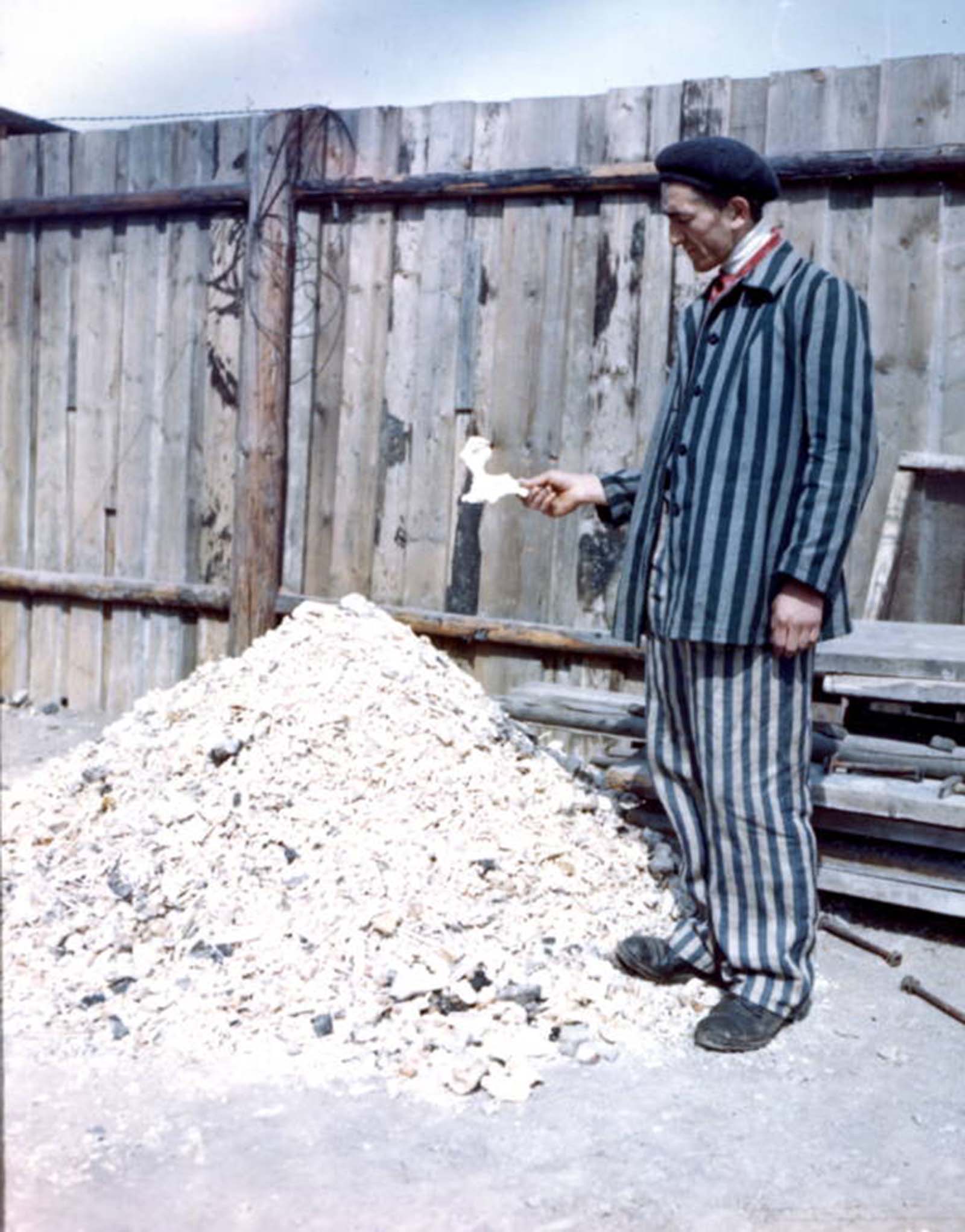
A former prisoner holds a human bone from a large pile of other bones from the crematorium at the Buchenwald concentration camp. 1945.

Celebration of the liberation of France. 1944.

British Prime Minister Winston Churchill, US President Franklin Roosevelt, and Soviet leader Joseph Stalin during the Yalta Conference (Crimea). 1945.
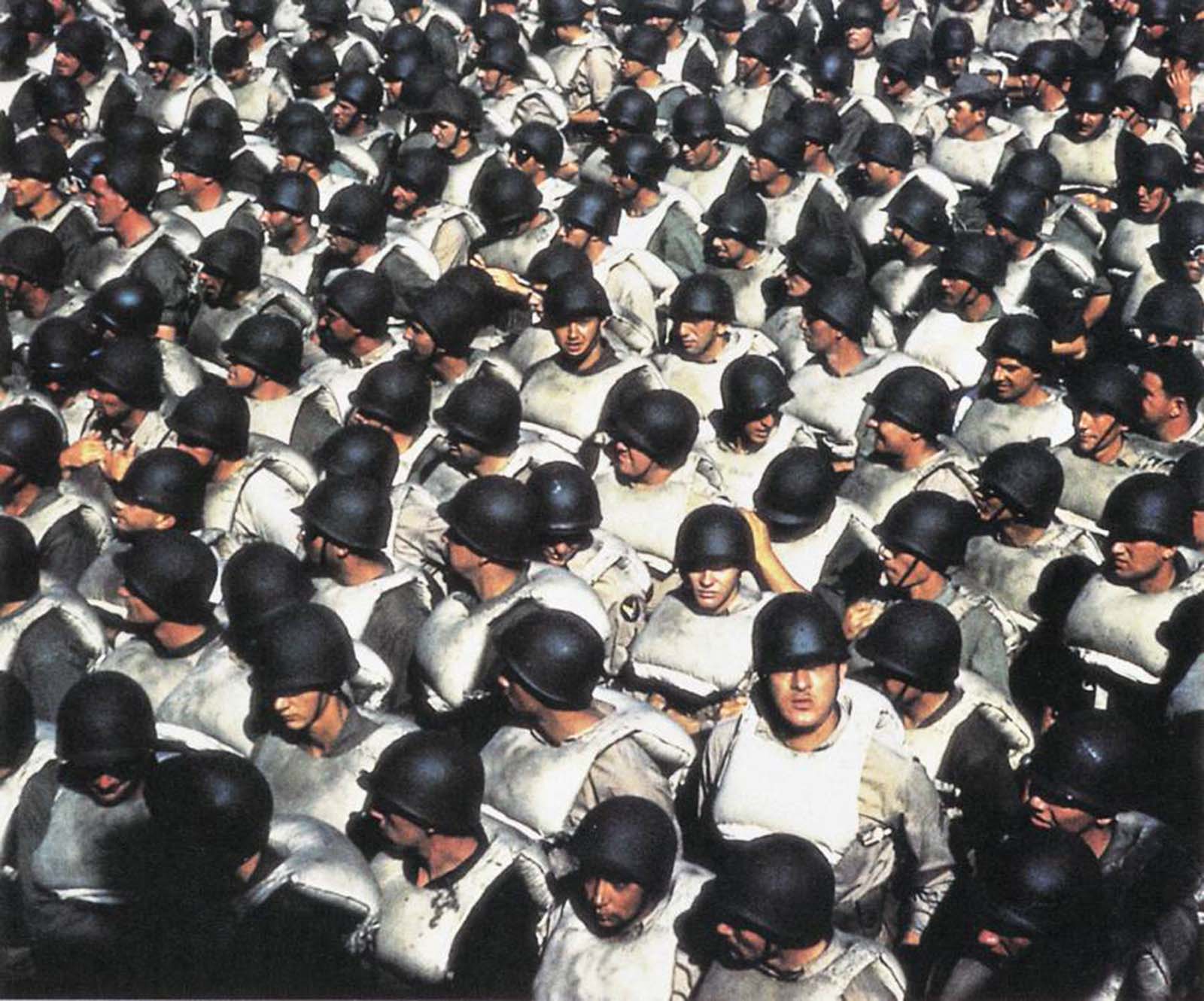
US troops ready for D-Day. 1944.

US troops in Cologne. 1945.

US Air Force over Germany. 1945.

Actress Marlene Dietrich sits on a piano as troops gather around her. Italy. 1945.

A sailor from the US aircraft carrier USS Bennington inscribes a bomb with the inscription “For Gael!” in memory of a deceased shipmate. Pacific Ocean, 1945.

Troops and missiles line the deck of the battleship USS New Mexico. Invasion of Guam, 1944.

American tank crews at Fort Knox. 1942.

American soldiers observe Japanese and American officials signing the former’s surrender declaration. 1945.

An American soldier trains at Fort Knox. 1942.

The German heavy cruiser Admiral Hipper was abandoned in drydock in Kiel, Germany, in May 1945.
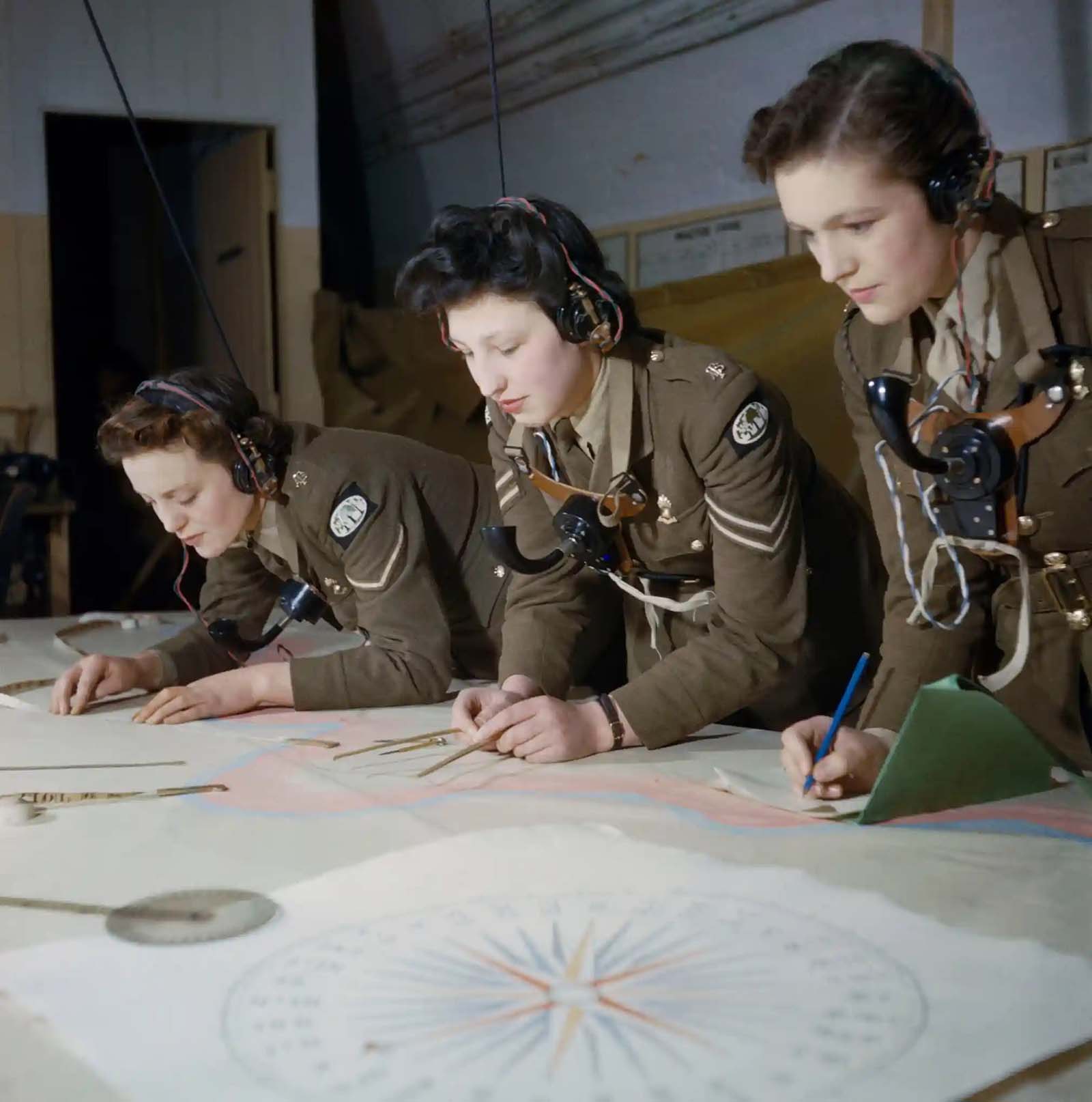
Auxiliary Territorial Service (ATS) conspirators at work at the Coast Artillery Headquarters in Dover, December 1942.

Children aboard a Sherman tank of the 3rd County of London Yeomanry in Sicily, August 1943.

Local workers assist RAF mechanics in changing the engine of a Lockheed Hudson at Yundum in the Gambia, April 1943.

Women produce bullets and gun shells in an underground munitions factory on the Wirral Peninsula, Merseyside, 1945.
